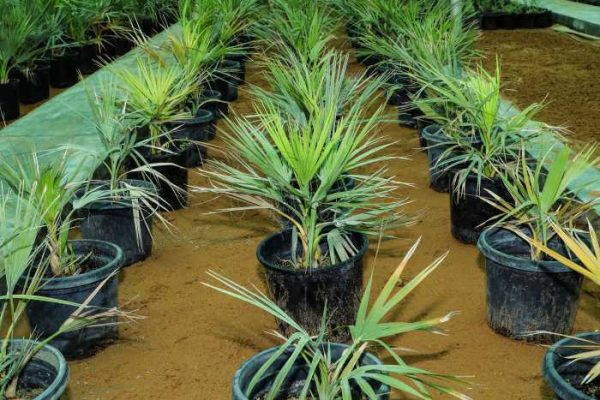

Al Ain Zoo has beautified an area of 1,303 square meters using native plants, including Pulicariaglutinosa, Nannorrhopsritchiana, Carallumaarabica, and Senna, in addition to Ghaf, Lawsonialnermis, and pomegranate trees, Most of these native plants are grown in the zoo’s glasshouse nursery. Additionally, the zoo used different kinds of decorative stones and recycled materials, like tree trunks.
In fact, the zoo is involved in a number of plant-based initiatives. It succeeded in propagating an endangered native palm known as the Gadaf or dwarf palm, an effort undertaken to preserve it from extinction. Our zoo also works on Al Ain Safari Greening project, which is the biggest manmade safari in the world. We plant large numbers of native plants that can handle the UAE’s weather, including its high heat and summer droughts, and they can also withstand salinity.
The zoo saved around 95% of the water it used to irrigate grass, and there is also a great opportunity to save large volumes of irrigation water used in the landscaping projects because the native plants require very little care compared to other plants, which often need pruning, fertilizing, and other expensive interventions.
The zoo is also keen to organize workshops aimed at educating school and university students about the importance of preserving local plants, protecting them from extinction, and propagating and caring for them. The zoo runs these workshops in addition to its annual winter camps for students and its external awareness workshops held in schools. It also hosts volunteers and trainees from the College of Agriculture and Food at the UAE University; they have been participating in the zoo’s landscaping projects.
The cultivation and propagation of local plants contributes to enhance the area’s local heritage by adding a lovely aesthetic to the zoo’s grounds. Growing endangered local plants in the zoo’s greenhouse is a way of protecting them, preserving them, and reintroducing them into the wild, and using them in our landscaping means our grounds now honor the principles of sustainability in creativity. Monitoring the growth of local plants and studying their nature constitutes a scientific research project and allows us to collect seeds for the greenhouse’s seed bank.
Local plants are among nature’s most important treasures because of their ability to live in hot desert conditions. They are successful because they have unique characteristics and are resistant to diseases and pests.
